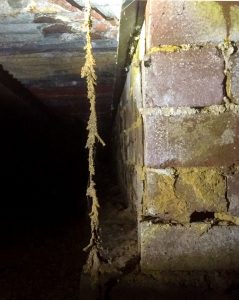exipest pest control had a call out to a house in St Ives, Sydney, to treat cockroaches. Whilst treating the exterior of the property, we noticed a dying tree. Upon closer inspection it had the telltale signs of termite damage throughout the bark. The client was informed and we were engaged to investigate further. The tree was drilled into the heart wood, where a large void was noted. The type of termite found was Coptotermes Spp.
Coptotermes Spp, are one of the most destructive termites on Sydney’s North Shore and cause huge amounts of structural damage to buildings when left untreated. Termites forage for food constantly through the soil and can travel considerable distances from the nest looking for feeding sites. This tree was only 8 meters from the house.
As you can see in the photo’s supplied, a temperature probe was inserted into the hole. The temperature in side the tree was 30 degrees on a 24 degree day. What does this mean? It means that the tree had a colony of termites in side. Termites raise the temperature and humidity to help support fungal growth inside the nest to around 30+ degrees.
The tree was treated with a Nonrepellent Termiticide, the holes were sealed and the treatment was checked 2 weeks later. An arborist was contacted to check its health. What resulted was its removal due to the lack of good wood left after the termites.





